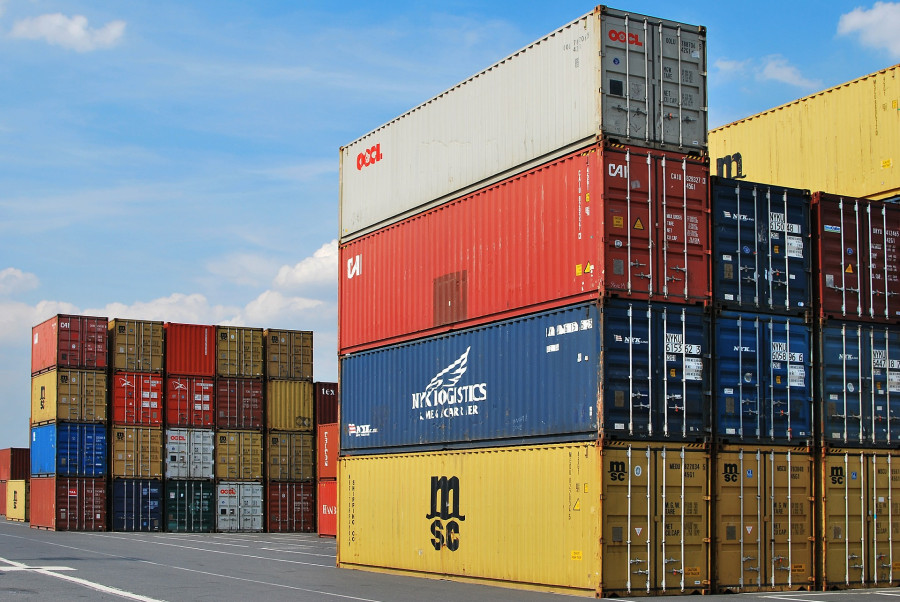Opinion
Economic woes abound
It is logical to examine whether Nepal’s affiliation with the WTO has benefitted it
Bijendra Man Shakya
The World Trade Organisation (WTO) is currently reviewing Nepal’s trade policy in Geneva for the second time since it joined the intergovernmental body in 2004. This periodic trade policy review mechanism provides an opportunity for member countries to show how their economic and trade policies have expanded the enabling environment for international business. While the review aims to find out whether member countries have been maintaining discipline and honouring the commitments made to the multilateral trading system, it is also based on the WTO’s principle of transparency. In addition, the WTO is founded on the principles of non-discrimination and a fair and predictable trading system.
Against this backdrop, it is reasonable to examine whether Nepal’s affiliation with the WTO system has really paid off, considering the country’s current trade deficit problem and miserable export condition. The truth is that WTO has nothing to do with these internal problems of Nepal. It does not directly give business to member countries. It only pledges a predictable trading environment for its member countries on the basis of its principles.
GSP versus DFQF
It is a member country’s responsibility to exploit the trading environment and avoid undesirable circumstances. More importantly, the WTO has not endorsed any preferential treatment for least developed countries (LDCs) like Nepal. The organisation has proposed duty-free, quota-free (DFQF) treatment which aims to provide preferential market access to all LDCs within the framework of this multilateral trading system. Unlike the popular Generalised System of Preferences (GSP) programme which seeks to help the developing countries by providing duty-free entry for their products and is voluntary in nature, DFQF is binding for all developed member countries of the WTO and is tied to its popular Doha Development Agenda (DDA). Expecting the DFQF scheme to be as effective as GSP, the LDCs in the WTO, including Nepal, have justifiably raised the status of its implementation very frequently. But they didn’t question its rationality in the present form. There are two important aspects in this regard.
The DFQF scheme has only 97 percent of tariff lines, or products listed in a country’s tariff schedule. This means it allows preference-giving countries to exclude 3 percent of their tariff lines from preferential treatment. Since countries like Nepal have a very narrow export base, almost all their products can be excluded and their capacity to utilise the preference neutralised. Secondly, it is pertinent to question the relevance of DFQF in a globalised trading system characterised by reduced tariff barriers which has eroded preference for LDCs. In a liberalised and globalised trade regime, preferential market access is becoming ineffective and irrelevant in the absence of a country’s trade capacity.
Nevertheless, the WTO has launched an ‘aid-for-trade’ initiative with the aim of compensating for the loss in trade caused to poor countries by the erosion of preference. This trade support programme aims to assist the LDCs in their use of trade as an engine of growth. Since its launch in 2006, more than $80 billion of aid-for-trade resources have been disbursed to the LDCs with annual flows growing at the rate of 86 percent, according to a WTO report.
Nepal is one of the beneficiaries of this incentive programme aimed at enhancing supply capacity and generating jobs and income through trade. Unfortunately, the impact of the programme seems to be minimal in countries which lack predictability and where the resources are utilised arbitrarily. This programme can be meaningful from a long-term perspective, but its value will depend on whether it is based on the beneficiary country’s needs and whether the development partners accord priority
to them.
For LDCs like Nepal, trade liberalisation under the multilateral system has been central to its trade policy formulation since the early 1990s. Despite their faith in the system, the LDCs have been marginalised in global trade. Their share of world trade remains at around 1 percent even though they account for more than 13 percent of the world’s population. Since the emergence of the multilateral trading system 70 years ago, export trade has grown 26 times to $18 trillion. But poor countries like Nepal have not been able to increase their share of the pie.
Share in world exports
WTO studies indicate that the LDC share in world exports has actually contracted in recent years. This contradicts the international aim to raise the LDC share to 2 percent by 2020. The target cannot be met without addressing the important issues of high tariff, tariff peak and tariff escalation which are becoming as relevant as the problem of tariff erosion in the present context of the LDCs.
The proceedings at the latest WTO Summit in Buenos Aires in 2017 gave two important messages about the participation of LDCs like Nepal in the multilateral trading system. While the LDC alliance has become stronger than before in raising their concerns, multilateralism has faced a crisis of credibility following the deadlock in the Doha agenda. This agenda is at the heart of the WTO agenda to develop poor countries through trade. Amid these circumstances, the benefit to Nepal from its affiliation to the multilateral trading system should be determined by its
commitment to create an enabling trading environment instead of the extent of preferential treatment.
Shakya is an associate professor ofeconomics at Tribhuvan University.




 17.12°C Kathmandu
17.12°C Kathmandu










